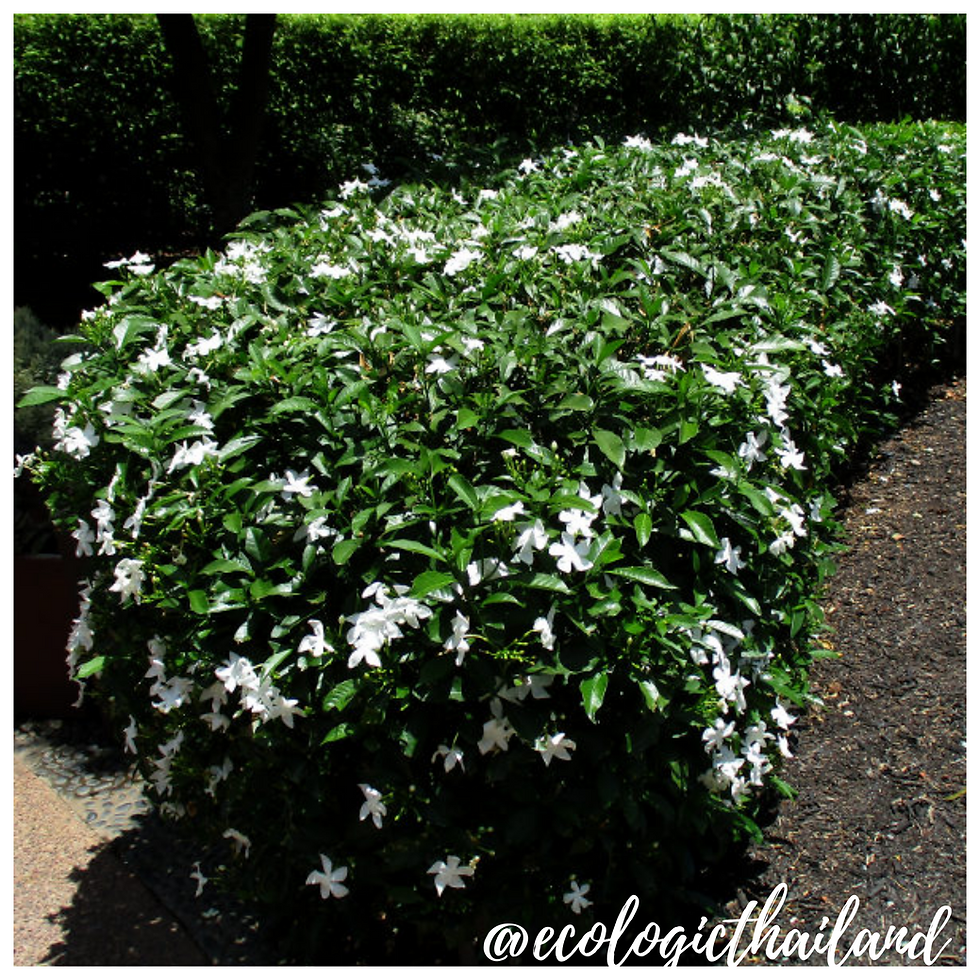Golden Shower - Purging Cassia
- Eco-Logic Resort
- Jan 28, 2021
- 3 min read
Ratchaphruek | ราชพฤกษ์ | Cassia fistula
Family: Fabaceae - Genus: Cassia

The Golden Shower trees can be found in the area and alongside the main roads in Phato.
Cassia Fistula, known as the golden shower tree and by other names, like golden rain tree, purging cassia, Indian laburnum or pudding-pipe tree, is a flowering tree. The tree is the national flower of Thailand; its yellow flowers symbolize Thai royalty. A 2006–2007 flower festival, the Royal Flora Ratchaphruek, was named after the tree, which is known in Thai as ratchaphruek (Thai: ราชพฤกษ์) and the blossoms commonly referred to as dok khun (Thai: ดอกคูน).
It is a medium-sized tree, growing to 10–20 meter tall with fast growth.
The leaves are deciduous, 15–60 centimeter long, and pinnate with three to eight pairs of leaflets, each leaflet 7–21 centimeter long and 4–9 centimeter broad.
The flowers are produced in pendulous racemes 20–40 centimeter long, each flower 4–7 centimeter diameter with five yellow petals of equal size and shape.
The fruit is a legume, 30–60 centimeter long and 1.5–2.5 centimeter broad, with a pungent odor and containing several seeds.
The Golden Shower tree blooms from March to May in Thailand.

THE TREE
The Golden Showr tree is a medium sized deciduous or semi-deciduous tree, 10 to 15 meter tall with a straight trunk to 5 meter in height and 1 m in diameter. It has spreading branches that form an open crown.
The stem bark is pale grey, smooth and slender when young and dark brown and rough when old.

THE LEAVES
The leaves of the Golden Shower tree are alternate, spirally arranged, 30-40 centimeter long, each pinnae bearing 3-8 pairs of large, ovate leaflets, 7.5-15 centimeter long x 2-5 centimeter broad,

THE FLOWERS
The flowers of the Golden Shower tree are showy, bright yellow in color, 3.5 centimeter in diameter. They are borne on terminal, drooping racemes about 30-60 centimeter long.

THE FRUIT
The fruit of the Golden Shower true is a pendulous, cylindrical pod, up to 60-100 centimeter long by 1.5-2 centimeter wide. It is black, glabrous and many seeded (25-100 seeds). When the pods are still young, the seeds are embedded in a black pulp. The seeds are ellipsoid, 8-9 mm long, glossy light brown in color.
CULINARY USES
Edible parts are the young leaves, flower buds, flowers, and pulp of the pods. Golden shower has been used mainly for medicinal purposes. n India, flowers of the golden shower tree are sometimes eaten by people. The leaves have also been used to supplement the diets of cattle, sheep, and goats fed with low-quality forages.[10]
NUTRITION
The edible fruit tissue of the fruit is a good source of Iron (Fe) and Manganese (Mn). The pulp is rich in aspartic acid, glutamic acid, and lysine, which constitute 15.3, 13.0, and 7.8% of the total amino acids respectively in the pulp.
In the seeds the same amino acids constitute, 16.6% (aspartic acid), 19.5% (glutamic acid), and 6.6% (lysine).
TRADITIONAL MEDICINAL USE
NOTE: please take advice from a doctor if you are planning to use herbal medicine.
In Ayurvedic medicine, the golden shower tree is known as aragvadha, meaning "disease killer". The fruit pulp is considered a purgative, and self-medication or any use without medical supervision is strongly advised against in Ayurvedic texts.
Though its use in herbalism has been attested to for millennia, there is no to little research done to it's medicinal use nowadays. although it is an ingredient in some mass-produced herbal laxatives. When used as such, it is known as "cassia pods".
INTO THE WILD: a down to earth experience

For guests and visitors to Paksong we organize weekly tours "The Edible Forest" and Foraging weekends: Into the Wild. We work with local guides to take you in the jungle of Paksong. After foraging, we will cook a meal with the ingredients, using bamboo together with you!
Come and join and learn about the abundance of food that nature gives us!
INTO THE WILD!


















Comments